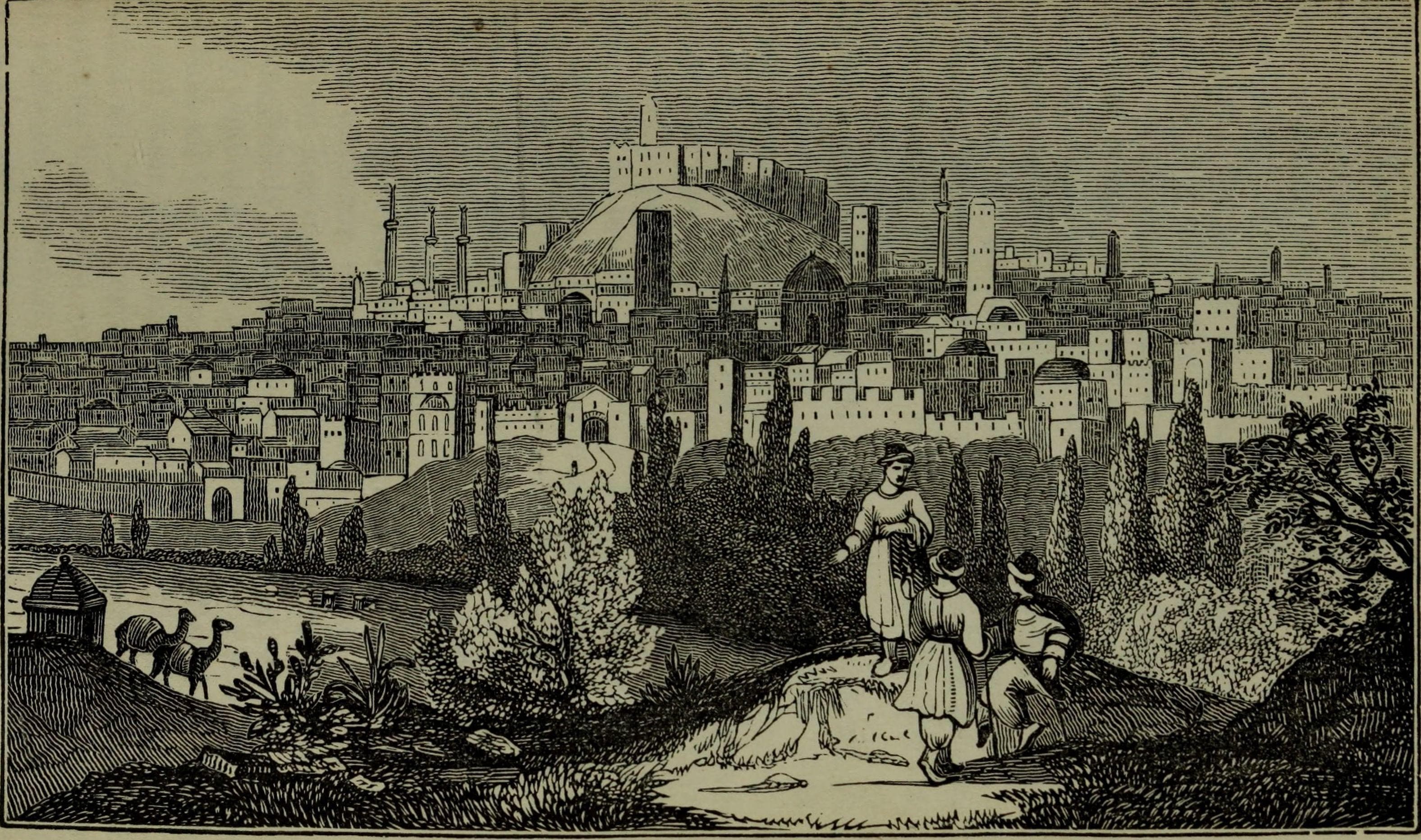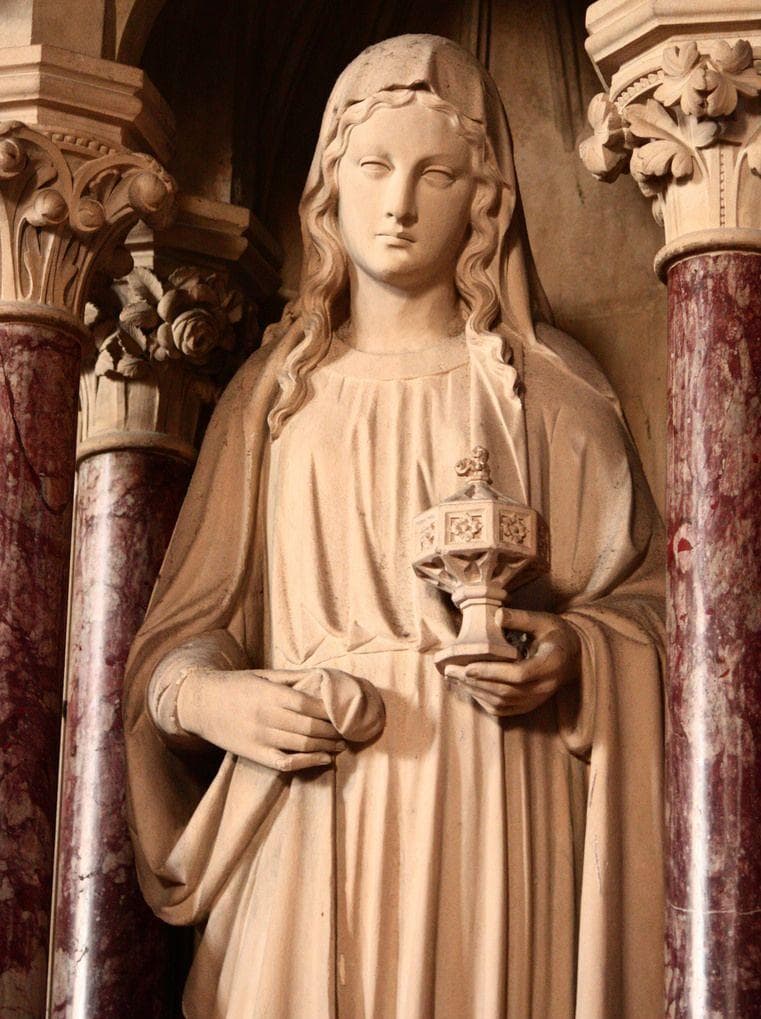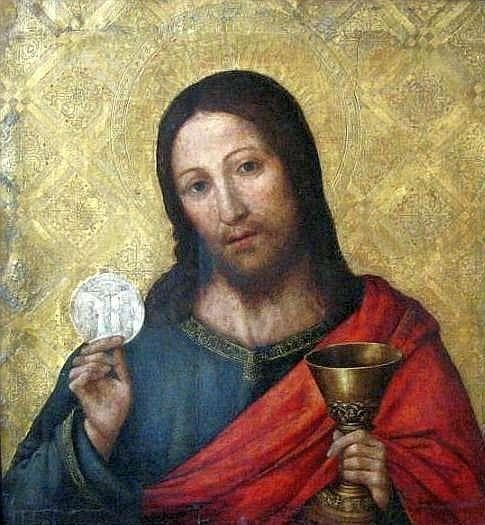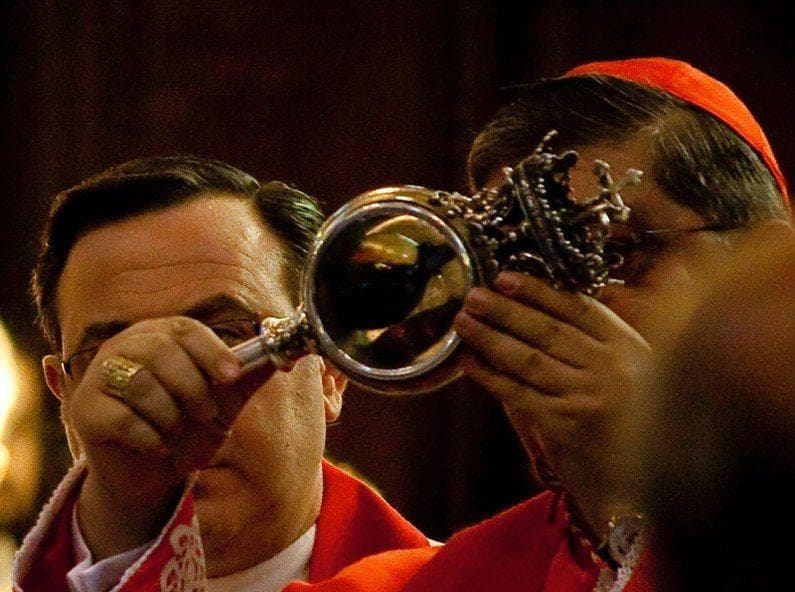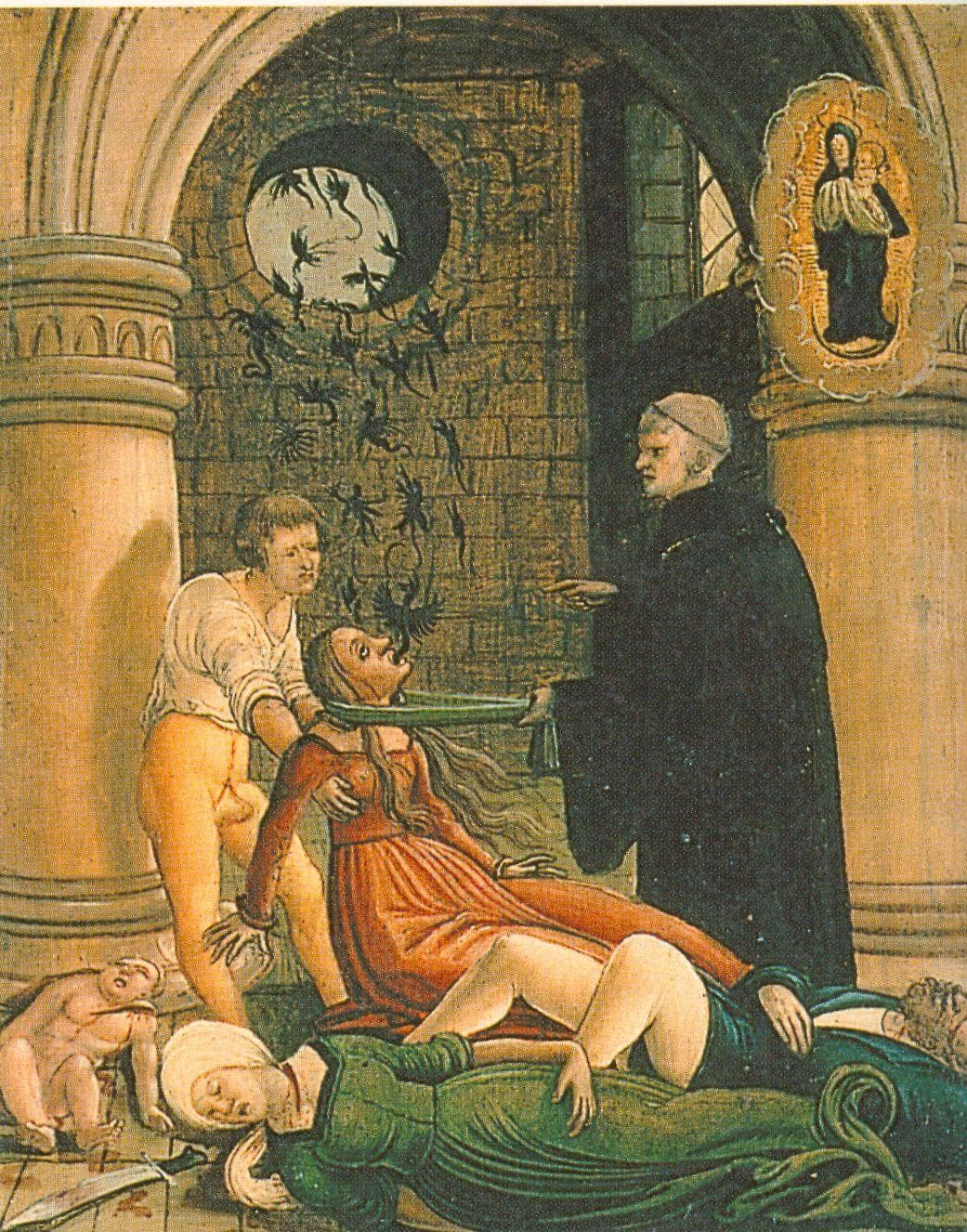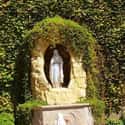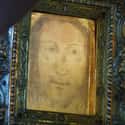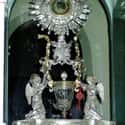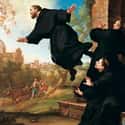-
(#3) Our Lady Of Lourdes And The Healing Water
In 1858, in Lourdes, France, a 14-year-old girl named Bernadette Soubirous lived with her family in an abandoned prison. Bernadette went with her sister and a friend to collect firewood on February 11. She lagged behind due to asthma and found herself alone at the Grotto of Massabielle, while the other girls had already crossed the cold stream.
According to Bernadette, as she worked to remove her socks and shoes, gusts of wind issued from the grotto before a blinding light followed. A woman in white robes with a blue sash, yellow roses on her feet, and a rosary in her hands appeared to Bernadette and encouraged her to pray. Bernadette's companions did not see any of this and brushed off her account of the vision.
She visited the woman daily over the next 15 days, despite police intervention and her parents' disapproval. On February 25, the woman told Bernadette to drink from and bathe herself in the fountain, but there wasn't one. The girl dug with her fingers until she found an underground water spring that still flows today. Three days later, the woman told the girl to build a church on the land, but the local clergy dismissed her until 1862 when they officially decreed the Virgin Mary had revealed herself.
Millions flock to the spring annually, and the Medical Bureau of the Sanctuary claims upward of 7,000 visitors have received healing from their ailments by immersing themselves in the spring. Each cured person submits their information to the Bureau for scientific authentication before leaving the holy grounds. Of the 7,000 reports of healing since 1862, 66 remain unexplained by science.
Bernadette became St. Bernadette after committing herself to a life of servitude as a nun and is one of the incorrupt saints recognized by the Catholic Church.
-
(#12) The Holy Face Of Manoppello
The Holy Face of Manoppello refers to a piece of sea silk - considered impossible to paint on - bearing the face of Jesus Christ. Also known as the Veil of Veronica, the piece residing in Manoppello, Italy, allegedly took on the face of Jesus around the time of his crucifixion when it was either wiped across his face or placed over it before his resurrection.
Catholic media alleges there is no paint on the piece of silk, and the image of Jesus on the veil supposedly matches the face on the Shroud of Turin, which some consider confirmation of the miraculous nature of both items.
-
(#4) Our Lady Of Zeitoun
Between 1968 and 1971, millions of people claimed to see the illuminated Virgin Mary atop the St. Mary's Coptic Orthodox Church in Zeitoun, Egypt. One witness thought he saw a nun on the roof of the church and ran to intercept what he believed was a suicide attempt. Instead, the glowing woman disappeared. Over the next three years, the Virgin Mary reportedly appeared for minutes or hours to crowds of people gathered at the foot of the church. She was seen holding olive branches and with doves flying around her at night, or with St. Joseph and a baby Jesus on occasion.
Investigations by local police tried to debunk the miracle and disperse the crowds from the area. A search within a 15-mile radius of the church uncovered no special effects equipment, special lighting rigs, or projectors capable of putting on such a spectacle. Some theories include mass hysteria, with the gathered people seeing what they wanted or expected to see. Many of the assembled witnesses, though, were Muslim and had no reason to imagine a figure they don't consider highly significant to their religion.
Many religious scholars point to Mary's appearance as the fulfillment of a promise she made to the family who built the church. Around 1918, the Virgin Mary allegedly appeared to Ibrahim Khalil in a vision and told him to build the church in her name on the land. She promised to return to the location and bless the church in 50 years. The church was completed in 1924, and the Virgin Mary returned in 1968 to perform what is now considered the miracle of Zeitoun.
-
(#8) The Miracle Of Lanciano
Referred to by many as the first Eucharistic Miracle of the Catholic Church, the miracle of Lanciano occurred in Italy during the 700s. A monk in the Church of St. Legontian wavered in his faith concerning the Catholic belief of transubstantiation - the process that turns wine and wafers into the blood and body of Christ during their consecration at the Sacrament of the Eucharist. As the monk spoke the words consecrating the wafers and wine, the food and drink allegedly turned into real human tissue and blood in front of witnesses at Mass. Throughout the following centuries, the blood and flesh remained unchanged in an ivory reliquary that traveled among different churches in Italy for display.
On March 4, 1971, Dr. Edoardo Linoli, former head of the Laboratory of Pathological Anatomy at the Hospital of Arezzo and professor of sciences, released his findings on the supposed blood and flesh held by the Catholic Church since the eighth century. He determined the flesh to be blood type AB and the tissue that of a human heart, specifically the endocardium. He found the blood to be consistent with that found on the hotly debated Shroud of Turin, and the tests revealed no preservatives in the samples.
A World Health Organization commission confirmed Linoli's findings after 500 experiments conducted over 15 months.
-
(#11) The Star Of Bethlehem
The Star of Bethlehem, which led the magi to the newborn Christ in the Bible, is a miracle to all sects of Christianity - not just Catholicism. Debate remains concerning the exact source of the star, though. Some believe God created and sent the star to guide the wise men to the manger where Mary gave birth, while others think it's nothing more than a symbolic representation of hope. Certain biblical theories suggest the star was an angel, whereas science hypothesizes it could have been a supernova or rare alignment of planets.
Astronomer Mark R. Kidger wrote The Star of Bethlehem: An Astronomer's View, where he laid out his theory that it was an exceedingly bright nova star. He dates the nova's appearance to March in the year 5 BCE. Astronomer Frank J. Tipler also believes the star was a nova. According to Hayden Planetarium lecturer Joe Rao, Jesus Christ is thought to have been born sometime after 4 BCE, and the star appeared between 7 and 2 BCE.
-
(#13) Miracles Of Levitation
Ordained as a priest in 1628 and seen as an eccentric, Guiseppe Desa of Cupertino allegedly levitated for the first time in 1630 during a procession for St. Francis of Assisi. After his inaugural flight, Desa began uncontrollably levitating during Mass or while attempting to perform other actions. He also had visions and gained the attention of the Catholic Church, which led to an inquisition.
The Church found nothing satanic about Desa's floating exploits and recognized him as St. Joseph in 1767, more than 100 years after his death. Several other individuals canonized as saints supposedly levitated during their lives - St. Padre Pio, St. Francis, and St. Teresa of Avila, to name a few.
Desa was said to have a learning disability in his early years; Father Dwight Longnecker wrote about Desa, saying, "Even if he had never levitated, he flew. He was raised up because that's the gospel principle: God raises up the lowly." Others who believe St. Joseph truly did hover above the ground point to research that the Casimir effect allows two objects placed close together to create a small force of energy, leading to a reverse attraction that can look like levitation.
New Random Displays Display All By Ranking
About This Tool
Catholics believe that miracles are the work of God, either directly or through the prayers and intercessions of specific saints. Many people regard miracles as events that destroy or deviate from the laws of nature, which are naive, superstitious, and unscientific. But Christians managed to support a self-satisfied world with firm faith, in the history of Catholicism, there are many events and great figures about miracles.
Catholics firmly believe that important historical figures who have fulfilled the Lord’s promise are God’s masterpieces. The random tool shares 15 amazing miracles in Catholicism that no one can explain.
Our data comes from Ranker, If you want to participate in the ranking of items displayed on this page, please click here.


